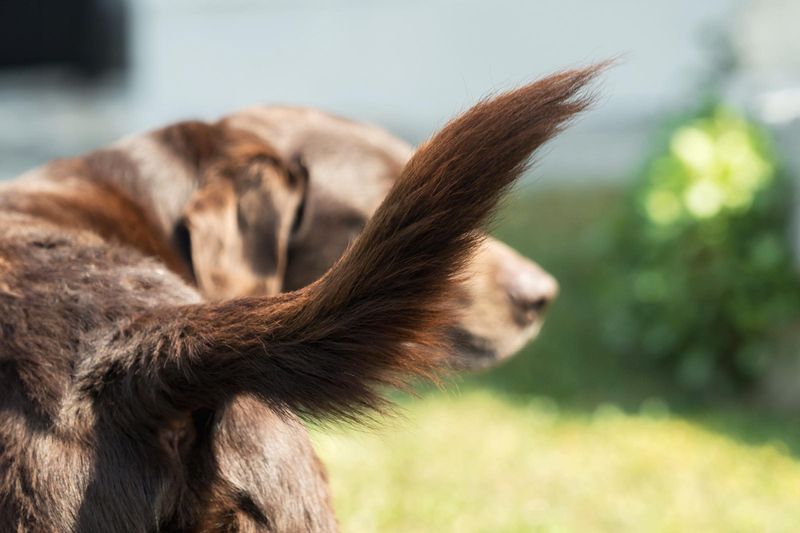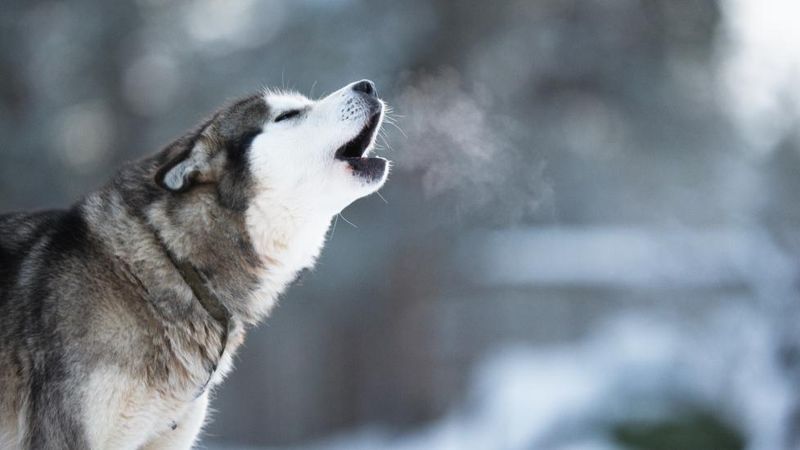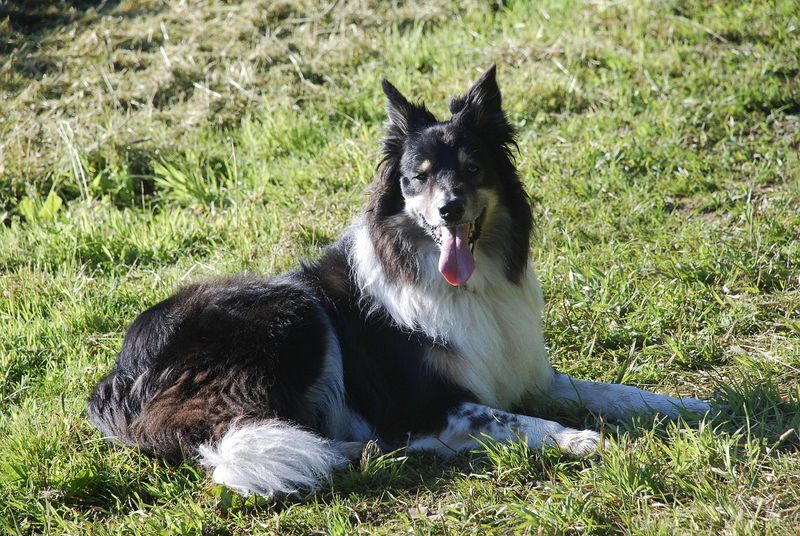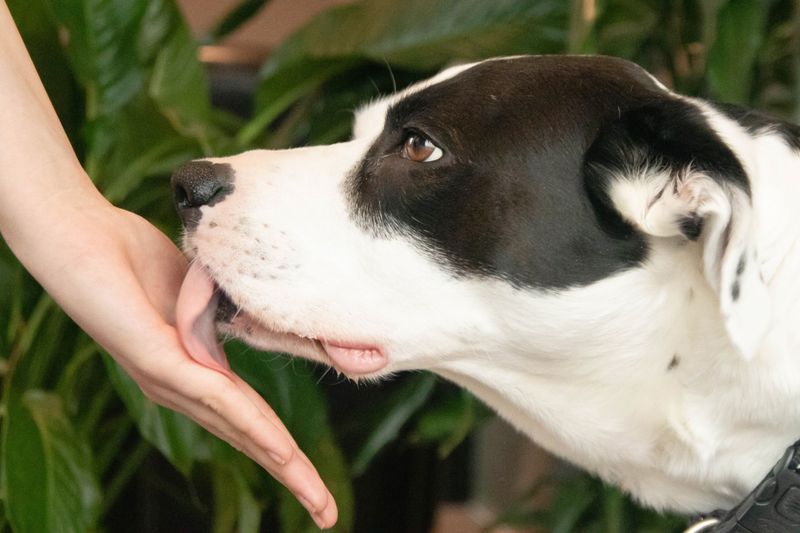Understanding your dog’s behavior can greatly enhance the bond between you and your furry friend. Dogs communicate through a variety of behaviors that can often leave us puzzled. This guide explores 12 common dog behaviors and uncovers their true meanings, helping you to better understand your canine companion.
Tail Wagging
A wagging tail is often perceived as a sign of happiness, but it can also convey a range of emotions. When a dog wags its tail high and fast, it’s usually excited or confident. Conversely, a slow wag might suggest uncertainty.
Observing the tail’s position can provide insights into your pet’s feelings. A tail tucked between the legs typically indicates fear or submission, whereas a stiff tail could mean aggression. Understanding these nuances can help in interpreting your dog’s mood accurately.
Next time you see a wag, look at the whole picture to grasp what your dog is truly expressing.
Barking
Barking is a dog’s way of communicating, whether it’s alerting you to intruders or seeking attention. Each bark can have a different pitch and intensity. A high-pitched bark often signals excitement or a call for play, while a low, growling bark might be a warning.
Consider the context when your dog barks. If it happens at the door, it could be alerting you to someone arriving. On the other hand, incessant barking might indicate boredom or anxiety.
Interpreting these cues can aid in addressing your dog’s needs effectively.
Digging
Digging is a natural instinct for dogs, rooted in their ancestry. It’s not just about creating a mess; dogs dig for various reasons, including burying treasures or cooling off on a hot day.
This behavior can be a form of exercise or stress relief. If digging becomes excessive, it might indicate boredom or a lack of physical activity. Providing your dog with appropriate outlets, like designated digging areas, can redirect this energy positively.
Understanding the motivation behind your dog’s digging can transform a frustrating habit into an enjoyable activity.
Chewing
Chewing is a common behavior, especially in puppies, as they explore the world. It’s not only about teething; chewing helps dogs relieve stress and boredom. A dedicated chewing session can also be a comforting ritual.
To prevent destructive chewing, provide a variety of safe toys. This ensures your dog has appropriate outlets for their natural instincts. Replace damaged toys to keep the experience fresh and engaging.
Understanding the reasons behind chewing can help in curbing unwanted behaviors and maintaining harmony in your home.
Whining
Whining can pull at your heartstrings, but it often signifies more than a simple plea for attention. Dogs whine to communicate needs, discomfort, or anxiety. A soft whine can be a request for food or a walk, while high-pitched whining might indicate stress.
It’s important to observe the context and accompanying body language. If your dog is pacing or has its ears back, it may be anxious about a situation.
Addressing the root cause of whining helps in providing comfort and understanding to your pet.
Yawning
Yawning in dogs isn’t merely a sign of tiredness. It’s a calming signal, often used to reduce stress. When your dog yawns, it might be trying to calm itself or others in a tense situation.
Yawning can also be contagious among dogs, just like with humans. If your dog yawns when meeting new pets or people, it’s likely trying to ease the tension.
Understanding this behavior can help you create a more relaxed environment for your furry friend.
Howling
Howling connects dogs to their wild ancestors. It’s a form of long-distance communication, signaling location or bonding. A dog may howl when hearing sirens or other dogs, as it’s instinctively responding to perceived calls.
While it can be endearing, excessive howling might indicate loneliness or separation anxiety. Addressing the underlying cause is key, whether it’s through companionship or environmental enrichment.
Recognizing this ancient behavior provides a glimpse into your dog’s instinctual world.
Panting
Panting is a dog’s way of cooling down, as they don’t sweat like humans. After exercise, panting helps regulate body temperature. However, excessive panting without physical exertion might be a sign of stress or health issues.
Monitor your dog for other symptoms if panting seems unusual. Providing shade and water can help keep your dog comfortable during warm weather or intense activity.
Understanding panting allows for better care during different situations, ensuring your dog’s well-being.
Rolling Over
Rolling over is often a playful gesture, inviting interaction. It can also be a sign of submission, showing trust and vulnerability. When a dog exposes its belly, it’s demonstrating comfort with its surroundings.
This behavior can be a request for a belly rub, or simply a way to enjoy a good scratch on the ground. Observing the context can help determine whether it’s play or communication.
Interpreting this behavior strengthens the bond between you and your dog.
Licking
Licking is a multi-faceted behavior, symbolizing affection or submission. Dogs use licking to communicate with humans and other animals. A gentle lick can be a sign of love, while persistent licking might indicate anxiety.
If your dog licks excessively, consider whether it’s seeking attention or expressing nervousness. Redirecting this energy with toys or puzzles can alleviate stress.
Understanding the nuances of licking helps in addressing behavioral issues and fostering a positive relationship.
Sniffing
Sniffing is how dogs explore their world. With a highly developed sense of smell, dogs gather information through scents. A dog might sniff obsessively to track something interesting or familiar.
This behavior is essential for mental stimulation and exercise. Encouraging sniffing during walks can make them more enjoyable and fulfilling for your pet.
Appreciating this natural instinct enhances your understanding of your dog’s daily activities.
Tilted Head
A tilted head can melt hearts, but it also has practical reasons. Dogs tilt their heads to better hear and understand sounds, or to see past their snouts.
This behavior often occurs when a dog is curious about something unfamiliar. It can also be a way to gauge your reactions or signals.
Recognizing this adorable quirk can provide insights into your dog’s thought process and interactions.












